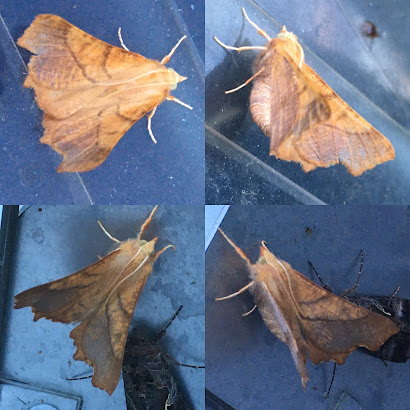It's five years since the Pale Eggar paid me a visit, and that was a first. A discriminating moth then and one whose distinctive appearance is nurtured, often, by two years spent in its pupa transforming from caterpillar to adult. I am fond of the family as we bred caterpillars of the bigger and more colourful Oak Eggar at school and I have seen males of their relative the Fox moth flying by day in the Lake District and found its caterpillars on the heather there.
My next visitor is more the size of the big eggars or even larger, and also an Old Faithful in the moth trap at this time of year. And elsewhere. Penny spotted one on a grey and red pub sunshade on a visit to Radcot on the Thames before we moved South and we've seen them day-flying on other occasions since. A grand experience!
It's the Red Underwing, one of the many moths which keeps its glorious underwear out of sight unless agitated or preparing for take-off. However, you can get a quiet glimpse of what is in store by manoeuvring the moth so that you can photo its underwings, as in my first two pictures of it above. and below.
This one has clearly been about a bit but was still a very strong flyer. After I had tickled it into showing a little red from above, it took off at a great rate and soared away. Within seconds it was at treetop level and out of sight.








2 comments:
Dusky Thorn looks good. In the Red Underwings, keep an eye out for the scarcer migrants, the Crimson Underwings.
Cheers
Edward
Absolutely and it makes underwing-flashing even more important as distinguishing them by their forewings alone is a no-hoper for the likes of me. Many thanks for the thorn confirmation and all vb
M
Post a Comment